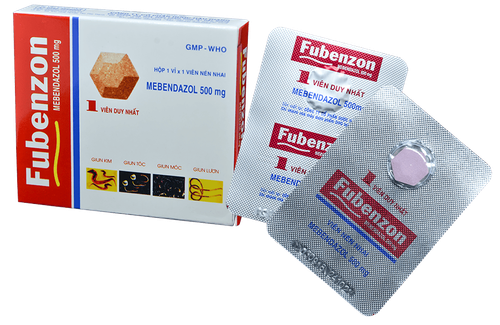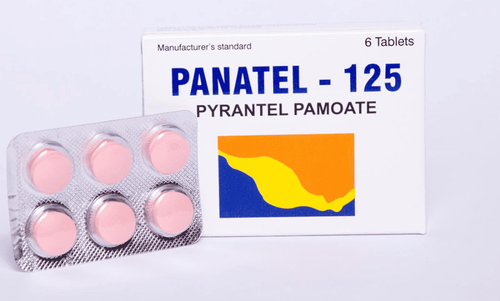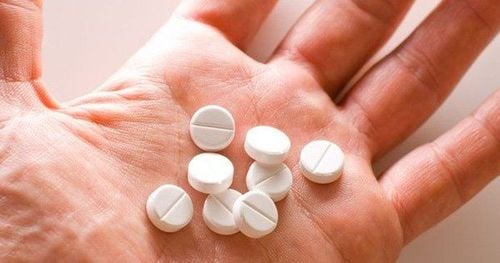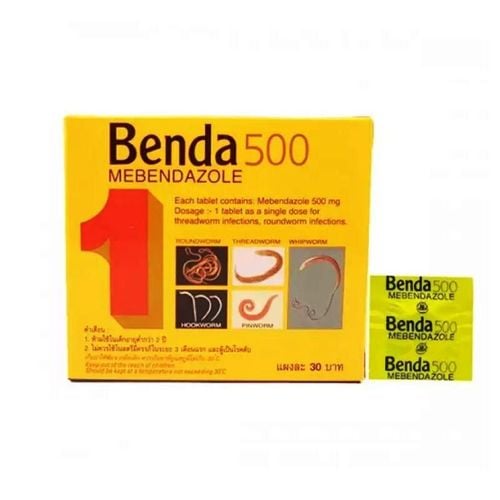This is an automatically translated article.
Albefar is an over-the-counter medicine, used in cases of roundworms, whipworms, hookworms, strongyloides and tapeworms. Complying with the indications, the dose of Albefar will help patients improve the effectiveness of treatment and avoid unwanted side effects.
1. What are the effects of Albefar?
1.1. What is Albefar? Albefa is a parasite treatment and an antibacterial or antiviral drug. Albefa with registration number VD-16014-1 is a product manufactured by Pharmedic Pharmaceutical Joint Stock Company.
Albefa drug is made in the form of tablets, packed in a box with 1 tablet. Albefa's main ingredients are Albendazol: 400mg and excipients: Corn starch, Lactose, Povidon, Sodium saccharin, Vanilin, Magnesium stearate, Sodium lauryl sulfate just enough for 1 chewable tablet. Albendazol is a benzimidazol derivative, which has an anthelmintic effect by inhibiting glucose absorption, causing fructose metabolism disorders and causing them to die.
1.2. What diseases does Albefar treat? Indications: Albefar is indicated for the treatment of roundworms (Ascaris lumbricoides), pinworms (Enterobius vermicularis), strongyloides (Strongyloides stercolaris), hookworms (Necator americanus) and whipworms (Trichuris trichiura).
Contraindications:
Contraindicated to use Albefar in case:
People are allergic to any ingredients, excipients in the drug. The patient had a history of bone marrow toxicity. Pregnant.
2. Usage of Albefar
2.1. How to take Albefar Albefar tablets can be chewed or taken with water. Users do not need to fast when taking the enema. 3 weeks after receiving the first treatment, if the stool test is still positive, the user can take the 2nd treatment.
2.2. Dosage of the drug Albefar Treatment of roundworms, pinworms, hookworms, whipworms:
Adults and children over 2 years old: Take a single dose of 400mg. Can be used again after 3 weeks. Children less than 2 years old: 200mg single dose. May repeat treatment after 3 weeks. Treatment of migratory skin larvae:
Adults: Oral dose of 400mg x 1 time/day, 3 days. Children: 5mg/kg/day, orally for 3 days. Treatment of cysticercosis:
Adults: Use 800mg per day, orally for 28 days. Use repeat treatment if needed. Children over 6 years old: 10 to 15 mg/kg/day, orally for 28 days. Use repeat treatment if needed. Children under 6 years of age: Dosage has not been determined. Brain fluke larvae:
Adults and children: 15 mg/kg/day, for 30 days. Repeat treatment if necessary after 3 weeks. Tapeworms, strongyloides:
Adults and children over 2 years old: Use 400mg x 1 time/day, take 3 days. Repeat treatment if necessary after 3 weeks. Children less than or equal to 2 years old: Use 200mg x 1 time / day, take 3 days. Repeat treatment if necessary after 3 weeks. Note: Albefar dosage above is for reference only. The specific dose depends on the condition, and the progression of the disease.
Handling missed dose:
Add Albefar dose as soon as you remember. But if the interval between the next dose is too short, the user skips the missed dose of Albefar and resumes the dosing schedule. Do not take a double dose of Albefar to make up for a missed dose. Treatment of overdose:
In case of overdose, Albefar should treat symptoms (gastric lavage) and use supportive measures.
3. Notes when using Albefar
Patients with abnormal liver function, blood disease should be careful when using Albefar. Albefar can cause leukopenia (less than 1%) and reversible. Rarely more severe reactions, including agranulocytosis, agranulocytosis or a decrease in leukocytes. A complete blood count should be obtained at the start of a 28-day treatment cycle and every 2 weeks during treatment. Treatment with albendazole can be continued if the white blood cell count is small and does not worsen. Albefar may cause mild to moderate elevations in liver enzymes in 16% of patients, which return to normal when treatment is discontinued. Tests of the user's liver function (transaminases) should be performed prior to the start of each treatment cycle and at least every 2 weeks during treatment. If liver enzymes are elevated, the user should stop taking Albefar. Treatment with Albefar can then be resumed when liver enzymes return to pre-treatment levels, but more testing is required during re-treatment. Patients treated for cysticercosis with brain damage should take additional corticosteroids and anticonvulsants. Oral or intravenous corticosteroids prevent episodes of increased intracranial pressure during the first week of treatment for this larva. Neurocysticercosis, which can affect the retina, is very rare. Therefore, before treatment, the patient's retinal lesions should be tested. Even when used together with corticosteroids, any drug that kills tapeworm larvae used to treat cysts in the eye or spinal cord can cause irreversible harm, so before treatment, an eye exam should be done to rule out except for cysts in the eye.
4. Side effects of the drug Albefar
Some very rare disorders may occur when taking Albefar such as: epigastric pain, nausea, vomiting, diarrhea, headache and skin allergies. These disturbances will gradually disappear as soon as the drug is stopped.
Albefar can also cause serious side effects such as:
Easy bruising or bleeding and unusual weakness; Fever, sore throat, headache, burning, itching, peeling, red skin rash, fever, chills, body aches or flu-like symptoms. Less serious side effects of Albefar include:
Abdominal pain, nausea and vomiting; Headache and dizziness ; Temporary hair loss. If you experience these symptoms, the patient should stop using Albefar and notify the doctor for appropriate treatment.
5. Albefar drug interactions
Co-administration of Albefar with Praziquantel increases plasma concentrations of the metabolite of albendazole. Combining Albefar with Cimetidine, Theophylline, and Dexamethasone might increase the risk of side effects from albendazole. To avoid interactions, before being prescribed Albefar, the patient should inform the doctor about the drugs they are using, including dietary supplements. The doctor will base on that to prescribe the appropriate Albefar.
6. How to store Albefar
The shelf life of Albefar is 36 months from the date of manufacture. Store Albefar in a cool, dry place, at a temperature not exceeding 30°C, in the original packaging and protected from light, as high temperatures will damage the ingredients of the medicine. Keep Albefar out of reach of children and pets. Carefully read the instructions for storing Albefar medicine listed on the package and the instruction sheet. Check the expiry date of Albefar before taking it. When Albefar is not in use, it should be collected and disposed of according to the manufacturer's or medical personnel's instructions. Above is all information about Albefar drug, patients need to carefully read the instructions for use, consult a doctor / pharmacist before using. Absolutely do not arbitrarily buy Albefar at home because there may be unwanted side effects.
Please dial HOTLINE for more information or register for an appointment HERE. Download MyVinmec app to make appointments faster and to manage your bookings easily.













